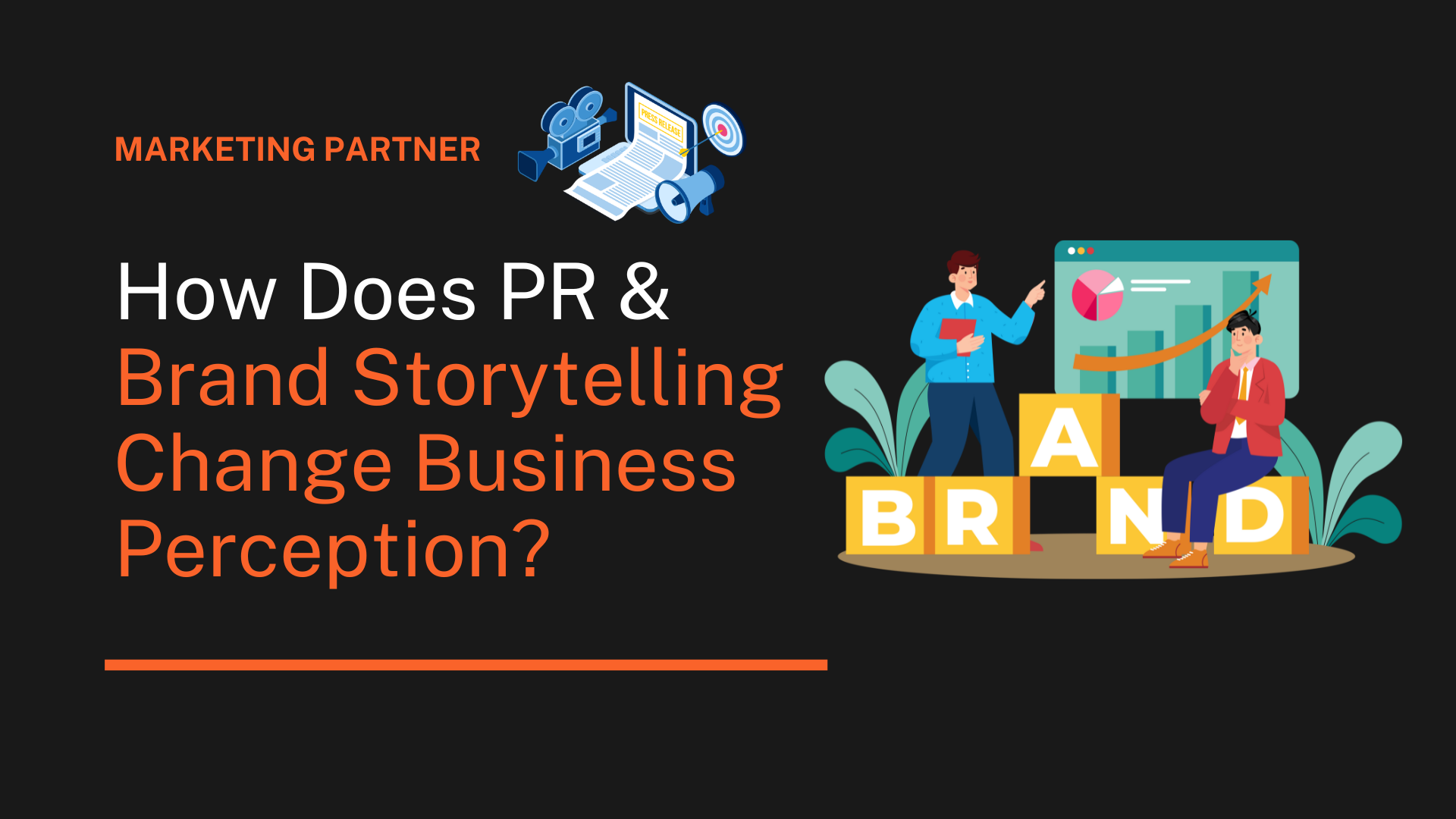People don’t just buy products, they buy into stories they connect with.
A powerful narrative makes a brand human, relatable, and trustworthy.
But here’s the catch: even the best story falls flat if no one hears it. That’s where PR (Public Relations) steps in. PR ensures that story is seen, trusted, and amplified in the right spaces, reshaping how audiences perceive your business.
Together, PR and brand storytelling create a winning formula: emotion + exposure = positive perception.

Why Business Perception Matters
In today’s crowded marketplace, perception is everything. It’s the invisible force that determines whether customers trust your brand, whether investors want to back you, and whether the media takes you seriously.
Perception is essentially the combination of:
- Reputation – what people say about you.
- Trust – the confidence people feel in your brand.
- Relatability – how well your story resonates with their lives.
A positive perception leads to:
- Higher brand loyalty (customers stay longer).
- Increased media visibility (your story is more likely to be covered).
- Easier customer acquisition (people choose familiar, trusted brands).
Read more: Brand Storytelling Agency: How to Create a Strong Brand Story with Strategic Copywriting
The Simple Framework: Mission → Value → Story
To understand how storytelling transforms perception, let’s break it into a simple framework:
- Mission – What your brand stands for.
- Value – The unique solution or benefit you deliver.
- Story – The narrative that connects your mission and value to your audience.
Example:
- Mission: “Make healthy living easy.”
- Value: “Affordable organic meals delivered fast.”
- Story: “A working mom who saves time and feeds her kids healthy meals without stress.”
This story makes the brand relatable (to busy parents), trustworthy (solves a real need), and human (not just another food delivery company).
Without a story, a brand is just a company. With a story, it becomes an identity people can connect with.
How PR Amplifies Brand Storytelling
If storytelling is the heart of a brand, PR is the megaphone that amplifies it.
PR doesn’t just spread information; it frames the story strategically so that the right audience hears it in the right way.
Here’s how PR brings storytelling to life:
- Media outreach and press coverage: ensuring journalists, bloggers, and podcasts feature the brand’s story.
- Crisis management: shaping narratives during challenges, turning potential negatives into positives.
- Influencer and thought leadership positioning: using trusted voices to tell the brand’s story.
- Social proof: showcasing testimonials, reviews, and case studies that validate the brand’s story.
Key Takeaway:
Storytelling creates emotion, PR creates exposure. Together, they shift business perception from “just another company” to “trusted, admired brand.”
Zomato & Nykaa (India)
- Zomato’s Story: A fun, witty, customer-first brand that makes food delivery effortless.
- PR Strategy: Consistent media presence, viral campaigns, and founder stories in leading publications.
- Impact: Built massive trust, leading to IPO success and consumer loyalty.
- Nykaa’s Story: A brand created by a woman for women, empowering beauty choices.
- PR Strategy: Founder interviews, lifestyle magazine features, and influencer tie-ups.
- Impact: Became a household name and one of India’s most successful startups.
These cases show how PR doesn’t create the story, it magnifies and legitimizes it.

Benefits of Using PR and Brand Storytelling Together
When businesses align storytelling with PR, the results go beyond visibility. They create a lasting perception shift:
- Authentic trust → Audiences feel the brand is genuine.
- Consistent messaging → Whether in media, ads, or social platforms, the story remains uniform.
- Differentiation → Sets you apart from competitors who only push features, not stories.
- Crisis resilience → A strong brand story helps weather negative press.
- Advocacy → Customers don’t just buy; they share your story, becoming brand ambassadors.
How Businesses Can Implement This Strategy
You don’t need to be Nike or Zomato to make this work. Even small businesses can change perception through a structured approach:
- Define your mission and values
- Be clear about what you stand for.
- Example: “We believe sustainability should be accessible to everyone.”
- Craft a human-centered story
- Use founder journeys, customer experiences, or community impact stories.
- Stories with people at the center always resonate more.
- Identify the right PR channels
- Local newspapers, niche industry blogs, podcasts, LinkedIn articles.
- Don’t chase every outlet — choose where your audience spends time.
- Share consistently and authentically
- Authenticity matters more than polish.
- Keep the tone human, not corporate.
- Measure impact
- Track mentions, media coverage, website traffic, and sentiment.
- Use tools like Google Alerts, PR tracking platforms, or simple surveys.
Read also: What is the Role of PR in Brand Storytelling
Final Thoughts
Strategic storytelling makes your brand relatable, human, and memorable.
PR ensures that story is heard, trusted, and amplified.
Together, they don’t just change business perception; they influence customer decisions and brand loyalty.
FAQs
Why is storytelling important in PR?
It humanizes campaigns, making them relatable, memorable, and more likely to drive trust.
Can small businesses use PR and storytelling effectively?
Yes, authentic stories amplified through local PR can build trust without large budgets.
How does brand perception affect sales?
Positive perception leads to higher trust, which directly influences conversions, loyalty, and referrals.





